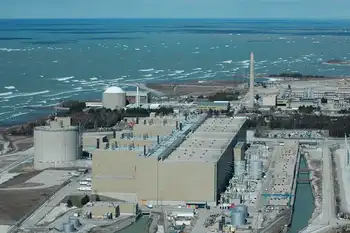The nuclear power loophole; Developers could avoid environmental impact check
SCOTLAND - Is there a hole in the law designed to protect the environment when plans that could damage it come up for consideration? The Greens think so. They believe the Environmental Assessment (Scotland) Act 2005 is something of a sham. It was not meant to be. It was intended to build on EU directives which said developments should not be allowed without considering the environmental impact.
According to Ross Finnie, the Environment Minister, the Scottish law is good for people, places and developments as it raises awareness of the impact of public plans on habitats, culture, landscape, climate change and the health of people. But not in the thorny area of nuclear development, according to the Greens. Allan Wilson, the Environment Minister, has confirmed to the party that an application to build a nuclear power station in Scotland would fall under older, weaker UK laws. This is because nuclear policy is reserved for the Westminster government, which recently concluded a wide-ranging energy review.
While Scottish Ministers have a say in UK energy strategy, Mr. Wilson also confirmed that the commercial developer of a nuclear plant would decide whether its plans should be subject to an assessment under the more stringent Scottish law. Bearing in mind that turkeys tend not to vote for Christmas, we think we know the answer. At the same time, however, the executive would apply the Holyrood legislation to any business planning a development which required an assessment in Scotland, for instance in renewable energy. The aim is to force public bodies to look strategically at Scotland's use of resources and the impact on the environment.
There would be no opt-out for business.
This raises important considerations. Building a new generation of nuclear power stations is on the UK government's agenda as a result of the energy review. In Scotland, the Holyrood government has a challenging target to meet for electricity generated by renewable sources (40-per cent of the total by 2020). Future windfarm, wave- and tidal-power developments would face a tough assessment on all counts identified by Mr. Finnie, and would be analysed strategically to take account of their cumulative impact. Building a new nuclear plant in Scotland potentially would be momentous for the environment.
Yet, if developers opted out of the Scottish test (as Mr. Wilson says they can) the environmental impact would be assessed on softer law superseded in and by Scotland. Also, the strategic overview would be British. With Scotland's energy needs being met by increasingly diverse non-nuclear sources, that would seem unusual, to say the least. The anomaly should be addressed.
Related News

Rio Tinto Completes Largest Off-Grid Solar Plant in Canada's Northwest Territories
ONTARIO - In a significant step towards sustainable mining practices, Rio Tinto has completed the largest off-grid solar power plant in Canada’s Northwest Territories. This groundbreaking achievement not only highlights the company's commitment to renewable energy but also sets a new standard for the mining industry in remote and off-grid locations.
Located in the remote Diavik Diamond Mine, approximately 220 kilometers south of the Arctic Circle, Rio Tinto's off-grid solar power plant represents a technological feat in harnessing renewable energy in challenging environments. The plant is designed to reduce reliance on diesel fuel, traditionally used to power the mine's operations,…




